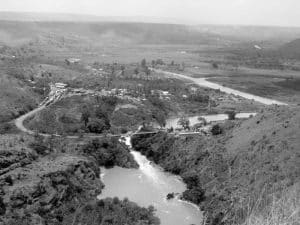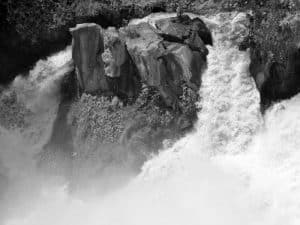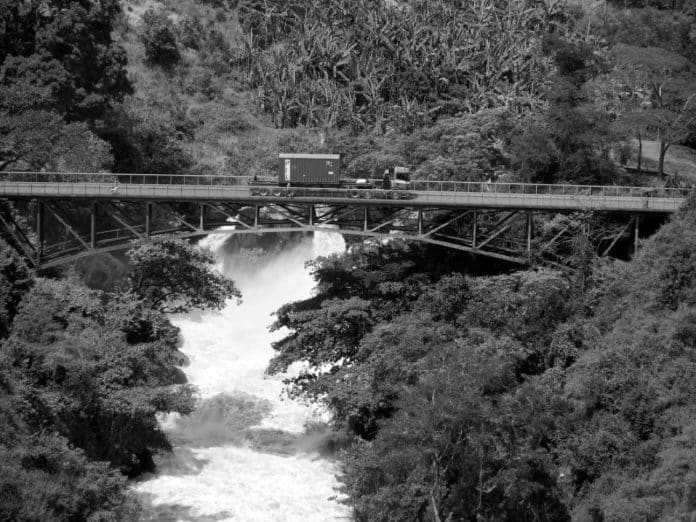Introduction to the Rusumo Bridge Project
Nestled along the border between Tanzania and Rwanda, the Rusumo Bridge stands as a testament to the power of regional integration and cooperation. This ambitious infrastructure project has not only connected these two East African nations but has also paved the way for enhanced trade, transportation, and economic growth in the region.
In this comprehensive article, we’ll delve into the significance, history, and impact of the Rusumo Bridge, exploring how it has transformed the landscape and fostered collaboration between Tanzania and Rwanda. From the intricate construction process to the environmental considerations and future plans, you’ll gain a deeper understanding of this remarkable engineering feat.
Overview of the Rusumo Falls Bridge
The Rusumo Falls Bridge is a remarkable structure that spans the Kagera River, which forms the natural border between Tanzania and Rwanda. Measuring an impressive 220 meters in length, the bridge connects the two countries, facilitating the movement of people, goods, and services across this vital waterway.
The bridge’s design incorporates a unique blend of modern engineering techniques and local architectural elements, seamlessly integrating it into the surrounding landscape. Its sleek, contemporary appearance and sturdy construction have earned it recognition as a symbol of progress and unity in the region.
The Significance of the Rusumo Bridge in Uniting Tanzania and Rwanda

The Rusumo Bridge holds immense significance for Tanzania and Rwanda, as it represents a tangible manifestation of the ongoing efforts to strengthen regional integration and cooperation between the two nations. By providing a reliable and efficient transportation link, the bridge has fostered closer economic ties, enabling the free flow of trade and the exchange of goods and services.
Moreover, the bridge has played a crucial role in facilitating the movement of people, allowing for easier access to education, healthcare, and employment opportunities across the border. This enhanced connectivity has the potential to promote cultural exchange, foster mutual understanding, and strengthen the bonds between the people of Tanzania and Rwanda.
The History and Construction of the Rusumo Bridge
The Rusumo Bridge project has a rich and fascinating history, dating back to the early 2000s when the governments of Tanzania and Rwanda recognized the need for a permanent crossing over the Kagera River. After extensive planning, feasibility studies, and international funding, the construction of the bridge commenced in 2015, led by a consortium of experienced engineering firms.
The construction process was a complex and meticulously planned undertaking, involving the use of advanced technologies, innovative construction techniques, and the coordination of a large workforce. Overcoming challenges such as the remote location, harsh environmental conditions, and the need to minimize the impact on the surrounding ecosystem, the project team successfully completed the bridge in 2018, marking a significant milestone in the region’s infrastructure development.
| Key Milestones in the Rusumo Bridge Construction |
|---|
| 2003 |
| 2015 |
| 2016 |
| 2017 |
| 2018 |
Benefits and Impact of the Rusumo Bridge on Trade and Transportation
The Rusumo Bridge has had a transformative impact on trade and transportation in the region, serving as a vital link between Tanzania and Rwanda. By providing a reliable and efficient crossing over the Kagera River, the bridge has significantly reduced travel times and transportation costs for both individuals and businesses.
Prior to the bridge’s construction, the only viable option for crossing the river was a ferry service, which was often unreliable and subject to weather-related disruptions. The Rusumo Bridge has eliminated these challenges, enabling the seamless movement of people, goods, and services between the two countries.
This improved connectivity has had a direct positive impact on regional trade, as it has facilitated the exchange of agricultural products, manufactured goods, and other commodities. Businesses on both sides of the border have benefited from the increased market access and opportunities for cross-border collaboration, contributing to the overall economic growth and development of the region.
Environmental Considerations and Sustainability of the Rusumo Bridge Project
The Rusumo Bridge project was designed and implemented with a strong focus on environmental sustainability and the preservation of the surrounding natural resources. The project team worked closely with local stakeholders and environmental experts to identify and mitigate potential environmental impacts throughout the construction and operational phases.
One of the key environmental considerations was the protection of the Kagera River ecosystem, which is home to a diverse array of flora and fauna. The bridge’s design and construction methods were carefully planned to minimize disruption to the river’s flow and to safeguard the habitats of the aquatic life. Additionally, the project incorporated measures to ensure the proper management of waste, the efficient use of resources, and the minimization of greenhouse gas emissions.
To further enhance the sustainability of the Rusumo Bridge, the project has also incorporated renewable energy solutions, such as solar-powered lighting and the use of energy-efficient materials. These initiatives not only contribute to the long-term environmental sustainability of the bridge but also serve as a model for future infrastructure projects in the region.
Challenges Faced During the Construction of the Rusumo Bridge
The construction of the Rusumo Bridge was not without its challenges, as the project team navigated a complex web of logistical, technical, and environmental obstacles. One of the primary challenges was the remote and rugged location of the construction site, which required the development of specialized transportation and logistics solutions to ensure the timely delivery of materials and equipment.
Additionally, the harsh environmental conditions, including heavy rainfall, strong winds, and fluctuating water levels in the Kagera River, posed significant challenges during the construction phase. The project team had to devise innovative strategies to adapt to these conditions and ensure the safety and integrity of the bridge.
Another challenge was the need to minimize the impact on the local communities and the surrounding ecosystem. The project team worked closely with stakeholders to address concerns and implement measures to protect the environment, while also ensuring the smooth progress of the construction.
Despite these obstacles, the project team’s dedication, technical expertise, and collaborative approach ultimately led to the successful completion of the Rusumo Bridge, showcasing the power of perseverance and innovation in the face of adversity.
Future Plans and Developments for the Rusumo Bridge
The Rusumo Bridge is not merely a static structure but rather a dynamic and evolving project that continues to shape the future of the region. The governments of Tanzania and Rwanda, along with their development partners, have identified several exciting plans and developments that will further enhance the bridge’s impact and contribution to the region’s growth.
One of the key initiatives is the ongoing expansion and modernization of the border crossing facilities on both sides of the bridge. These improvements will streamline the movement of people and goods, reducing waiting times and improving the overall efficiency of cross-border trade and travel.
Additionally, there are plans to integrate the Rusumo Bridge into a broader regional transportation network, connecting it to other major infrastructure projects, such as highways and railway lines. This integration will further strengthen the bridge’s role as a vital hub for regional connectivity and economic integration.
The Rusumo Bridge project has also sparked discussions about the potential for future cross-border collaboration in areas such as tourism, environmental conservation, and the development of shared economic zones. These discussions hold the promise of unlocking new opportunities for the people of Tanzania and Rwanda, fostering greater cooperation and mutual prosperity.
Economic and Social Implications of the Rusumo Bridge

The Rusumo Bridge has had a profound and far-reaching impact on the economies and societies of Tanzania and Rwanda. By enhancing cross-border connectivity and facilitating the movement of people, goods, and services, the bridge has opened up new avenues for economic growth and development.
One of the most significant economic impacts has been the boost to regional trade and commerce. Businesses on both sides of the border have reported increased sales, expanded market access, and greater opportunities for collaboration. This, in turn, has led to the creation of new jobs and the strengthening of existing enterprises, contributing to the overall economic well-being of the region.
Furthermore, the Rusumo Bridge has had a positive social impact, improving access to essential services such as healthcare and education. Residents of border communities can now more easily travel to access these services, reducing the burden on local infrastructure and promoting greater social inclusion.
The bridge has also facilitated cultural exchange and the strengthening of interpersonal connections between the people of Tanzania and Rwanda. By enabling the free movement of individuals, the bridge has fostered a greater understanding and appreciation of each other’s customs, traditions, and way of life, further cementing the bonds of regional cooperation.
Conclusion: The Rusumo Bridge as a Symbol of Regional Integration and Cooperation
The Rusumo Bridge stands as a powerful symbol of the ongoing efforts to promote regional integration and cooperation in East Africa. This remarkable infrastructure project has not only connected Tanzania and Rwanda physically but has also served as a catalyst for deeper economic, social, and cultural ties between the two nations.
Through the successful completion of the Rusumo Bridge, the governments of Tanzania and Rwanda have demonstrated their commitment to working together to address shared challenges and unlock new opportunities for the benefit of their citizens. This collaborative spirit, combined with the bridge’s tangible impact on trade, transportation, and social development, has positioned the Rusumo Bridge as a beacon of progress and a model for future cross-border initiatives in the region.
As you’ve seen, the Rusumo Bridge has had a transformative impact on the region, connecting Tanzania and Rwanda and fostering greater economic and social integration.
For more information on infrastructure click here!

































